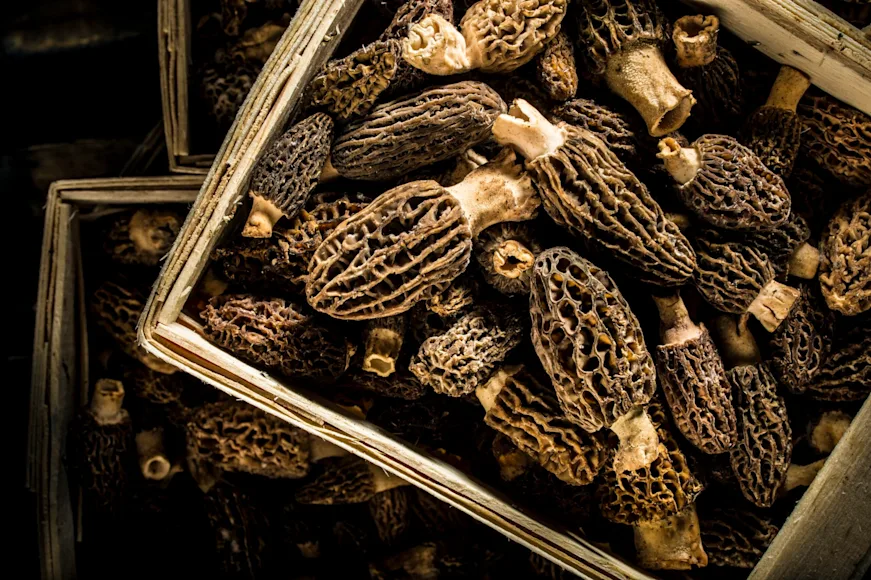are close to the perfect food. Abundant, delicious
, and easy to identify
, morels grow wild during the best time of the year. The only way to get them—if you don’t want to pay a lot of money—is to find them and pick them yourself. But, the morel’s hollow stem and pitted top hold dirt, grit, and the occasional bug or worm. Mushrooms are no different from any fish or game you bring home: proper care preserves their flavor. Here are some tips on cleaning morel mushrooms.
How to Clean Morel Mushrooms
Field care can start with picking. Some morel hunters
slice the stems, or pinch them to leave some in the ground, on the theory that leaving the mycelium (the “root”) helps more grow. It doesn’t help, but it doesn’t hurt, and it reduces the amount of dirt you bring home with your haul. If you do want to help morels propagate, leave the dried-out or rotting ones in the woods to spread their spores.
Carry the Right Mushroom Bag
Plastic bread bags are popular but not ideal choices for carrying your haul. They don’t breathe, and morels kept in a humid plastic bag can turn soggy. A bag made of soft mesh lets air circulate and won’t damage fragile morels the way a sharp mesh onion bag might. Some believe carrying morels in a mesh bag helps spread spores, and it might, slightly. But the real reason to use mesh is to let them breathe.
How to Prep Morels for Cooking, Freezing, or Drying
When you get home, refrigerate your morels until you’re ready to cook them. Before cooking, drying, or freezing morels, you’ll want to clean them. Slice the end of the stems off. I leave some stem, which, although not as tender and tasty as the cap, is still made of morel and it’s worth keeping some of it. Then slice them in half, from top to bottom.
Cleaning morels comes next and, like a doctor, your goal here is to do the least amount of harm. The longer you soak morels, the soggier they get. Ideally, you will have found fresh, clean mushrooms and you can brush a little dirt out of the insides and be done. Dirtier morels need a quick swirl and rinse in a bowl of water. If your morels are home to lots of bugs—and you object to some extra protein in your meal—you can soak them for 5 to 10 minutes in salt water which should kill anything living in your dinner.
Morels from sandy soil are the toughest to clean, and sometimes impossible. Those you may have to soak repeatedly. One of the biggest hauls of morels I brought home in recent years came from a fresh burn in very sandy soil. Every time I soaked them, more sand came out, but I never got it all. My wife, who loves morels even more than I do, was willing to eat gritty mushrooms, but I was not and after a few gritty meals, I threw the rest out.
Final Step in Cleaning Morel Mushrooms
However much or little you have to wash your morels, lay them out on paper towels to dry when you’re done. Soaking doesn’t rob them of flavor but it does make them soggy and you want them as firm and fresh as possible. After that, do with them what you will. I grew up on morels fried in beer batter, and much as I love that, I lean toward sautéing them into scrambled eggs. Whatever you do with your cleaned morels, save some to dry, either strung up, in the oven, or in a food dehydrator. They reconstitute beautifully and add a lot of flavor to stews on cold days when the brief morel season
is a distant memory.






